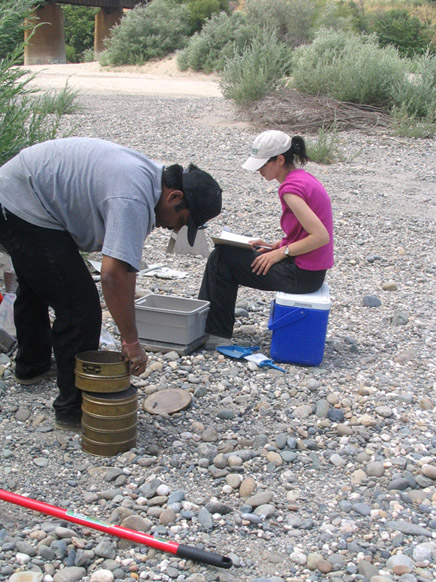 Geography 547
Geography 547Fluvial Geomorphology
Home Page (Fall 2017)
Course Description

Grading: Undergraduates and graduates will be evaluated separately based on two exams, exercises, a field trip, and (grads only) a term paper.
Item Undergrads Grads
Midterm exam 25% 22%
Final exam 30% 23%
Exercises 35% 15%
Attendance 10% ----
Annotated bibliography ---- 10%
Term paper ---- 25%
Term paper presentation ---- 5%
Exams: Examinations will cover readings and lecture materials. They will concentrate on materials covered in lecture. Exams will be in multiple formats including multiple choice, essay, fill-ins, and problem solving.
Final Exam: Thursday, Dec.8, 12:30 pm, Rm 202, Callcott
Exercises: Several weekly exercises will be assigned to expand upon applied aspects of lecture materials. Late submissions will be penalized and work will not be accepted after graded exercises are returned except under special circumstances.
Written Assignments (graduate students only):
Graduate students will submit an annotated bibliography with a brief abstract of their proposed term paper by Tuesday, Oct. 11. Term papers are due Tuesday, Nov. 29. Details about these assignments will be provided in a handout.
Presentations of term-paper projects (graduate students only): Graduate students will informally present their results to the group in the last week of classes.
Links
National
Geomorphology Specialty Group of the Assn American Geographers
This site has numerous links to other geomorphic web locations.
Select 'Resources' on the top menu bar and go to 'Internet Links.'
Quaternary Geology and Geomorphology Division (QG&G) of the Geological Society of America (GSA)
Local
Gully Stompers Research Team , Possum Trot, South Carolina
Page maintained by Allan James . Last Updated August 22, 2016.